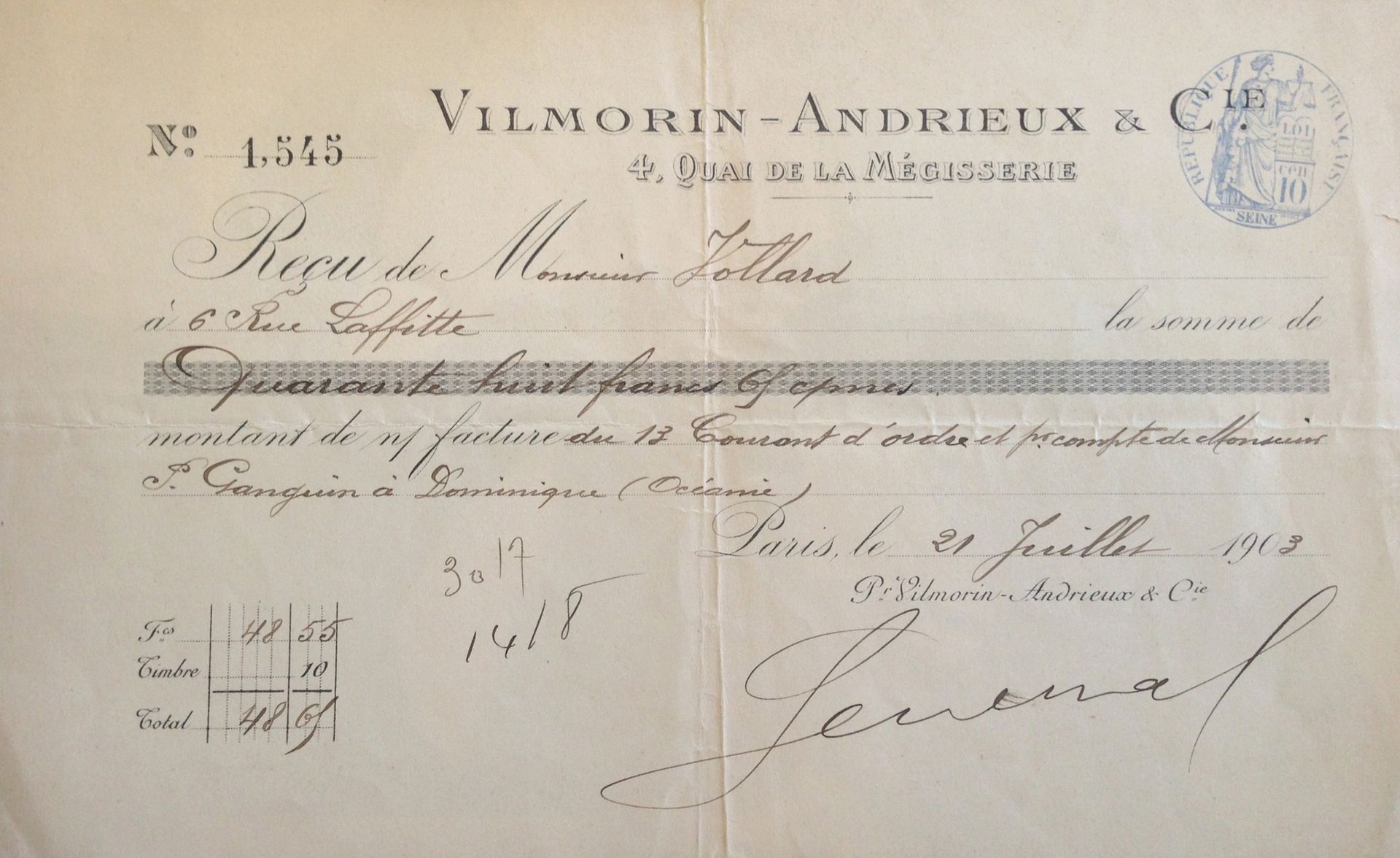The Art Newspaper has discovered a receipt for seeds ordered by Paul Gauguin to be posted from Paris to Polynesia. He needed them to grow European flowers that he could paint on his remote island home.
The seeds probably included sunflowers—in homage to Van Gogh, whom he had once visited in the Yellow House in Arles. The seeds had to be paid for by Gauguin’s Parisian dealer, Ambroise Vollard, who was notorious for his tardy payments. Gauguin had earlier complained to his Parisian artist friend Georges Daniel de Monfreid that his dealer had made him “miserably poor for years in order to obtain my pictures at ludicrous prices”. In this instance, it took 16 months from the artist’s order for the seeds to be shipped to Polynesia—but by the time they left Paris, Gauguin was already dead, after taking a large dose of morphine.
Gardening far from home

Gauguin was a keen gardener. In 1898, when living in Tahiti, he had asked Monfreid to send bulbs and seeds: “ordinary dahlias, nasturtiums, various sunflowers…I would like to decorate my gardens and, as you know, I love flowers.” A year later Vollard promised Gauguin that “if you care to do some flower paintings…I am willing to buy everything you do”. Gauguin later painted four still-lifes of sunflowers. Soon afterwards he moved from Tahiti to the Marquesas Islands, also in French Polynesia.
In March 1902 Gauguin wrote to Vollard: “Please be good enough to send me by post the flower seeds mentioned on the enclosed list. Get them from the firm of Vilmorin, that is the place where one can be sure of getting fresh seeds.” Monet and Caillebotte also bought their seeds there. Founded in 1743, the company is still in business today.
Gauguin waited patiently for a response to his letter since it took at least five months to get replies from Paris. Thirteen months after his initial request, in April 1903, Gauguin wrote again to Vollard. His terse two-sentence letter reads: “It is now more than eight months since you advised me of the shipment of canvases, paper, glue, etc and flower seeds. At the present moment my health would permit me to work hard, and I have nothing to work with.”
His health then deteriorated quickly, possibly due to syphilis. Even if the seeds had arrived, he would never have seen the flowers bloom. On 8 May 1903 Gauguin was found dead in his wooden hut on the island of Hiva Oa.
The order finally reached Vilmorin, but without payment. On 1 July 1903, Vilmorin asked Vollard “to pay for the articles ordered by Mr Paul Gauguin, so that, if you reply in the affirmative, we may ship them without further delay”. A Vilmorin receipt records that Vollard eventually paid 48.65 francs on 13 July for “Monsieur P. Gauguin à Dominique (Océanie)” (Dominique was then the French name for Hiva Oa). News of Gauguin’s death only reached Paris in August.
This receipt was found by The Art Newspaper in an unlikely place—the archives of Renoir. It remains a mystery why Renoir had the receipt for Gauguin’s seeds, but he was one of the few artists who remained a life-time friend of Vollard. The receipt was in a mixed lot of documents (unrecorded in the sale catalogue) in the Renoir archive sold by descendants of the artist, which was dispersed by New York-based Heritage Auctions in 2013. The lot with the receipt was bought by a private collector, but a photograph of the document was kindly supplied by the auctioneers.
• Martin Bailey is the author of The Sunflowers are Mine: the Story of Van Gogh’s Masterpiece (Frances Lincoln, 2013)

